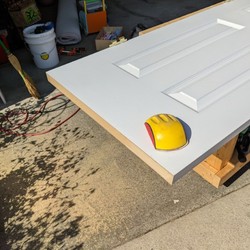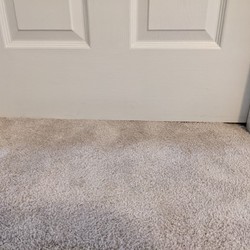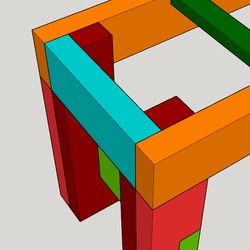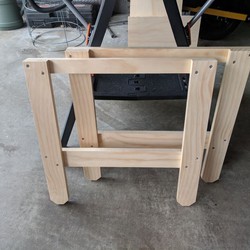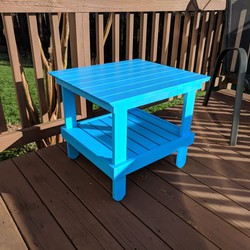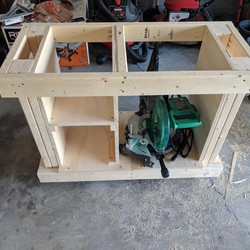Last month I was fortunate enough to purchase a Dewalt 735x thickness planer. My goal with this addition to the shop was two-fold:
- Make it possible to mill my own lumber from rough stock
- Easily thickness the lumber I have
In all my previous woodworking projects, I've used either S4S (surfaced-four-sides) or S2S (surfaced-two-sides) lumber; that is, all (or most) of the milling work has already been done for you. Buying S4S material is the most expensive way to purchase lumber. The cheapest way to purchase it is in the rough; the boards have been cut by the sawmill, but none of the faces are clean, square, or parallel. It's up to you, the woodworker, to fix that.
As an introductory step into the world of milling, I purchased enough rough Sapele lumber to build two patio side-tables. Each table is a modified version of the California Casual Patio Table that I made over five years ago, which is now all but falling apart.
Since I don't have a jointer, I built myself a jointing sled for the planer. It's an incredibly simple jig: a sheet of MDF with a small cleat glued to one end. Just stabilize the lumber that you want to joint on the sled with shims, then send it through the planer, taking off just a hair at a time. Eventually, the entire surface will be planed and the face will be both flat and parallel to the sled's reference surface (which is also flat). The lumber can then be sent through the planer to get the opposite face parallel (and flat). Combine this with an edge-jointing jig, which I built a while back for my table saw, and I can now convert rough lumber to S4S!
As with most things, there has been a learning curve. I've first learned that milling is typically at least a two-day process. The first step is to mill the lumber to rough thickness (7/8", for example, if the final thickness is to be 3/4"), and then let it rest for a night or two. The next milling process will take it to final thickness, and remove any warping that occurred after the first round. Rushing the process will yield warped lumber, which is a problem I ran into with the first table. Happily, the warpage was minimal, so I was able to recover.
I've also learned that milling creates a ton of sawdust. I'm amazed at how much sawdust results from the thickness planer; bags and bags of it!
All in all, this has been an enjoyable area of woodworking to learn and explore. The results speak for themselves, I think; the lumber I've milled for these side tables has been among the best quality I've worked with so far. It's a joy to construct something and have it come together so neatly. I look forward to using these skills in upcoming projects.

x250.jpg)
x250.jpg)
x250.jpg)




